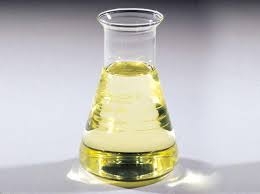**The Magic Behind Sudsy Secrets: How Surfactants Make Water Work Wonders**
(How Do Surfactants Reduce Surface Tension)
Imagine scrubbing a greasy pan. Without soap, the water beads up and rolls off. Add a drop of dish soap, and suddenly the water spreads out, clings to the pan, and cuts through the grease. This everyday magic happens because of surfactants. These tiny molecules are the unsung heroes in soaps, shampoos, and even laundry detergents. But how do they actually pull off this trick? Let’s break it down.
Water molecules are sticky. They love to stick to each other, forming a tight “skin” on the surface. This stickiness is called surface tension. It’s why water forms droplets and why bugs can skate on ponds. Surfactants mess with this stickiness. The word “surfactant” comes from “surface-active agent,” which is a fancy way of saying they work where water meets air, oil, or dirt.
Surfactants have two ends. One end loves water (hydrophilic). The other end hates water but loves grease and oil (hydrophobic). When you add surfactants to water, their hydrophobic tails panic and try to escape the water. They either stick up out of the water surface or latch onto nearby grease and grime. The hydrophilic heads stay behind, glued to the water. This creates a sort of molecular tug-of-war.
The tug-of-war weakens water’s surface tension. Picture a crowd holding hands tightly—this is water without surfactants. Now imagine someone slipping into the crowd and letting go of a few hands. The group isn’t as connected anymore. Surfactants do this at the molecular level. By interrupting the water molecules’ grip on each other, they make the water “looser.” This lets water spread out instead of staying in droplets.
But there’s more. Surfactants also trap dirt and oil. Their hydrophobic tails burrow into grease, while their hydrophilic heads stay in the water. When you rinse, the water drags the surfactant molecules—and the grease stuck to them—away. This is why soapy water lifts oil off your hands but plain water can’t.
Surfactants aren’t just in soap. They’re in fire extinguishers, where they help water spread faster to smother flames. They’re in lotions, helping oils mix with water so creams feel smooth. They’re even in paint, making pigments blend evenly without clumping.
Not all surfactants are the same. Some are harsh, like those in heavy-duty cleaners. Others are gentle, like the ones in baby shampoo. Natural surfactants exist too. For example, the saponins in quinoa plants create soapy foam when you rinse the seeds. Even your own saliva has mild surfactants to help digest fats.
Surfactants have a dark side. Too many down the drain can harm fish and plants. They might strip natural oils from your skin if overused. Scientists keep hunting for greener options—surfactants that clean well but break down safely in the environment.
Next time you wash your hands, think about the tiny warriors in the soap. Their split personalities—loving and hating water—are what make bubbles form, dishes shine, and laundry smell fresh. They turn a simple act like washing into a microscopic battle between order and chaos, with water as the ultimate negotiator.
(How Do Surfactants Reduce Surface Tension)
The science of surfactants isn’t just lab stuff. It’s in the suds of your morning shower, the foam on your latte, and the rain droplets sliding off a waxed car. By messing with water’s natural rules, these molecules make modern life cleaner, smoother, and a little more magical.
Inquiry us
if you want to want to know more, please feel free to contact us. (nanotrun@yahoo.com)




